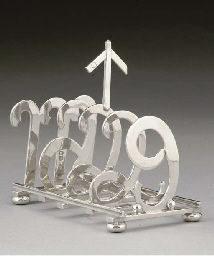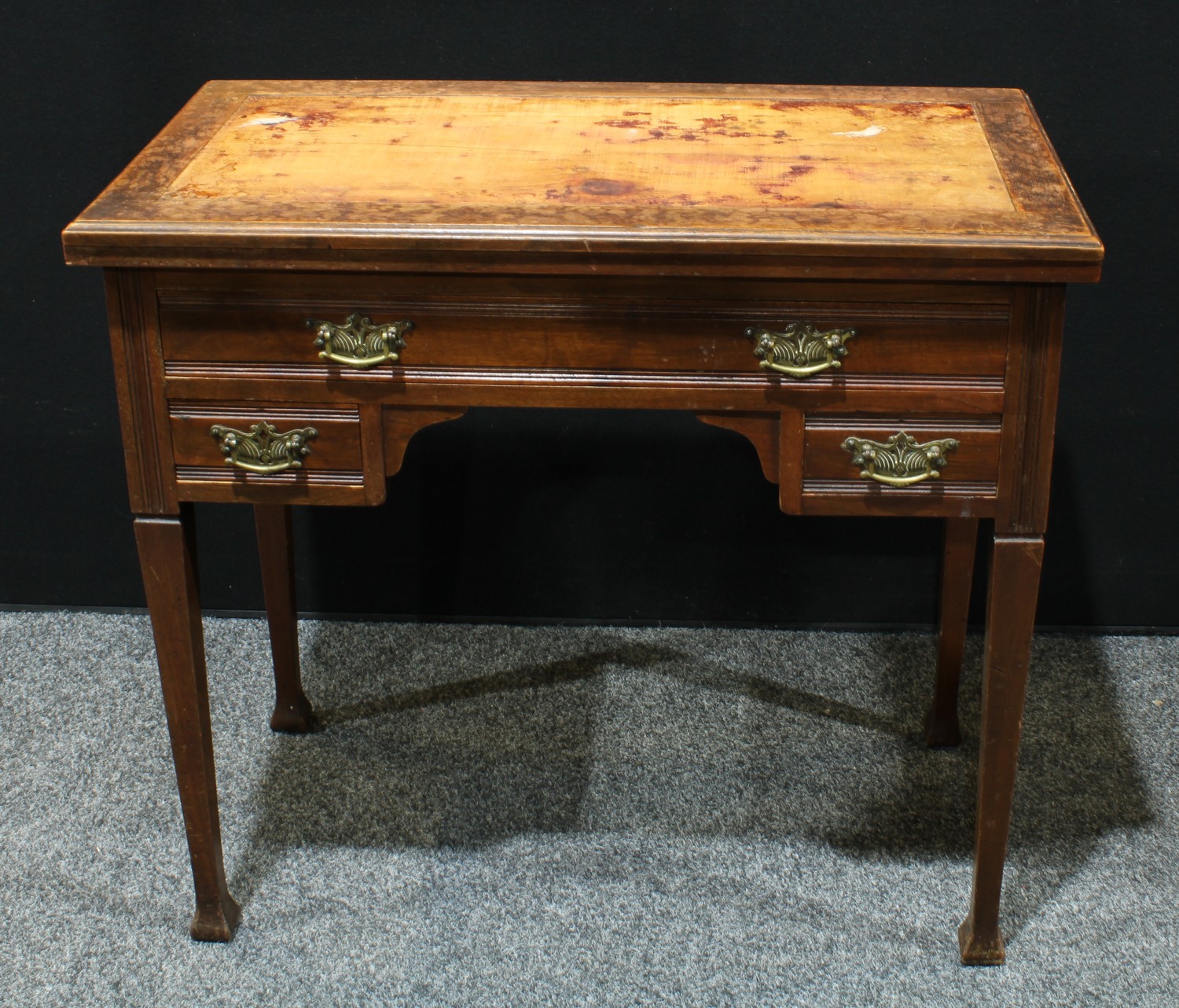An unusual late Victorian spring-driven regulator timepiece movement and dial, Reid and Sons, Newcastle-upon-Tyne, late 19th century The four pillar single chain fusee movement with inverted train incorporating Harrisons maintaining power and deadbeat escapewheel positioned towards the base, the backplate signed Reid & Sons, Newcastle-upon-Tyne, No.R 4911 over counterweighted motionwork arbor for the minute hand and substantial pendulum suspension hook/bracket to lower margin, the 16 inch circular cream painted Roman numeral dial inscribed REID & SONS ELECTRIC over subsidiary seconds dial to centre and with bold dark steel hands incorporating club-shaped tips (pallets, pendulum and seconds hand lacking). The Newcastle-on-Tyne firm of retail silversmiths, Jewellers and clock/watch makers was formed by Christian Ker Reid in 1788. He was born in Canongate, Edinburgh on the 8th September 1756 the son of Andrew Reid a brewer, and his wife Christian Bruce. At the age of twelve he was apprenticed to the Edinburgh silversmith William Davie, the indentures being signed on the 29th March 1769. He was to be William Davie's final apprentice. Having completed his term with Davie, Christian Ker Reid secured a position with Langlands & Robertson as a journeyman and arrived in Newcastle in June 1778. In late 1787 or early 1788, after nearly ten years with Langlands & Robertson, Christian Ker Reid opened in business on his own account, firstly on the south side of St Nicholas Churchyard, moving to the Groat Market in 1790 and then to Dean Street in 1801. The business continued in the hands of various generations of the Reid family who were subsequently appointed 'Makers to the Lords of the Admiralty' and were known as retailers of often top quality and interesting clocks, watches and chronometers. In 1862 Christian John Reid appointed his sons Thomas Arthur Reid and Walter Cecil Reid and his brother David Reid as partners; David Reid retired on the 31st July 1882. On the Death of Christian John Reid in 1891 Thomas Arthur Reid and Walter Cecil Reid became joint owners and were joined shortly after by a new partner, Francis James Langford. The business became a limited liability firm in 1930 and part of the Northern Goldsmiths Co. Ltd in 1967 and is still trading today. It is most likely that the current lot was made whilst the firm was primarily in the hands of brothers Thomas Arthur and Walter Cecil Reid. The unusual design suggests that the timepiece was intended to be incorporated into an architectural structure/fitting such as a screen or partition. The inclusion ELECTRIC within the dial inscription is curious as the timepiece is purely mechanical being driven by a spring and fusee. However it is perhaps appropriate to speculate that the movement may have served as a mechanical master timepiece which, with the provision of electrical contacts within the pendulum assembly, could have been used to regulate a series of electrically powered slave dials. This possibility may perhaps account for the upside-down layout of the wheel train as this configuration would allow the pendulum to swing clear of the movement beneath making it easier for electrical switchgear to be incorporated near the top of the pendulum where the very small motion of the swing would be most appropriate.
An unusual late Victorian spring-driven regulator timepiece movement and dial, Reid and Sons, Newcastle-upon-Tyne, late 19th century The four pillar single chain fusee movement with inverted train incorporating Harrisons maintaining power and deadbeat escapewheel positioned towards the base, the backplate signed Reid & Sons, Newcastle-upon-Tyne, No.R 4911 over counterweighted motionwork arbor for the minute hand and substantial pendulum suspension hook/bracket to lower margin, the 16 inch circular cream painted Roman numeral dial inscribed REID & SONS ELECTRIC over subsidiary seconds dial to centre and with bold dark steel hands incorporating club-shaped tips (pallets, pendulum and seconds hand lacking). The Newcastle-on-Tyne firm of retail silversmiths, Jewellers and clock/watch makers was formed by Christian Ker Reid in 1788. He was born in Canongate, Edinburgh on the 8th September 1756 the son of Andrew Reid a brewer, and his wife Christian Bruce. At the age of twelve he was apprenticed to the Edinburgh silversmith William Davie, the indentures being signed on the 29th March 1769. He was to be William Davie's final apprentice. Having completed his term with Davie, Christian Ker Reid secured a position with Langlands & Robertson as a journeyman and arrived in Newcastle in June 1778. In late 1787 or early 1788, after nearly ten years with Langlands & Robertson, Christian Ker Reid opened in business on his own account, firstly on the south side of St Nicholas Churchyard, moving to the Groat Market in 1790 and then to Dean Street in 1801. The business continued in the hands of various generations of the Reid family who were subsequently appointed 'Makers to the Lords of the Admiralty' and were known as retailers of often top quality and interesting clocks, watches and chronometers. In 1862 Christian John Reid appointed his sons Thomas Arthur Reid and Walter Cecil Reid and his brother David Reid as partners; David Reid retired on the 31st July 1882. On the Death of Christian John Reid in 1891 Thomas Arthur Reid and Walter Cecil Reid became joint owners and were joined shortly after by a new partner, Francis James Langford. The business became a limited liability firm in 1930 and part of the Northern Goldsmiths Co. Ltd in 1967 and is still trading today. It is most likely that the current lot was made whilst the firm was primarily in the hands of brothers Thomas Arthur and Walter Cecil Reid. The unusual design suggests that the timepiece was intended to be incorporated into an architectural structure/fitting such as a screen or partition. The inclusion ELECTRIC within the dial inscription is curious as the timepiece is purely mechanical being driven by a spring and fusee. However it is perhaps appropriate to speculate that the movement may have served as a mechanical master timepiece which, with the provision of electrical contacts within the pendulum assembly, could have been used to regulate a series of electrically powered slave dials. This possibility may perhaps account for the upside-down layout of the wheel train as this configuration would allow the pendulum to swing clear of the movement beneath making it easier for electrical switchgear to be incorporated near the top of the pendulum where the very small motion of the swing would be most appropriate.















Try LotSearch and its premium features for 7 days - without any costs!
Be notified automatically about new items in upcoming auctions.
Create an alert